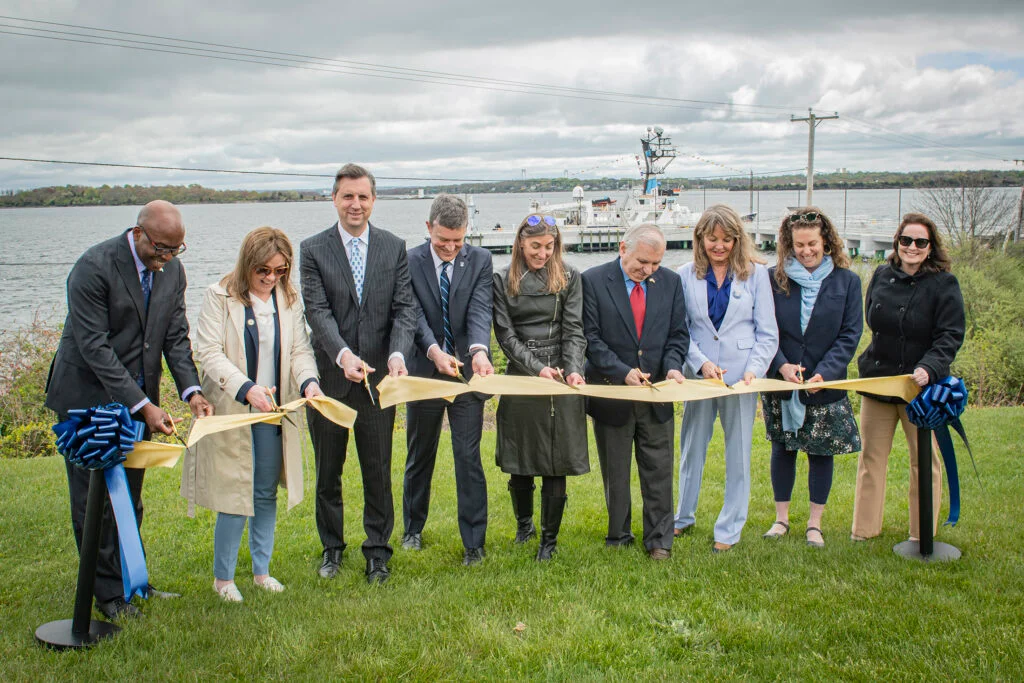The pier at the Narragansett Bay Campus provides support services to research vessels and full access to Narragansett Bay. The original wooden pier, built in 1963, had more than exceeded its designed service life and was unable to accommodate the new, 199-foot-long R/V Narragansett Dawn,. This project demolished the original pier and erected a larger, more capable, steel-and-concrete pier in its place.
The deck of the new pier is now 12.75 feet above Mean Lower Low Water (MLLW). This represents a 5.35-foot increase over the old pier deck elevation, corresponding with the most up-to-date sea-level-rise projections from NOAA. This decreases the frequency of pier overtopping without significantly complicating vessel-loading operations (+6.5 feet above waterline). A similar elevation of the paved road leading up to the access trestle was necessary.
The access trestle was constructed largely within the original trestle’s footprint to avoid permanent impact to mapped eelgrass beds to the north and south. The new pier’s major load-bearing elements include steel pipe piles and cast-in-place concrete pile caps supporting precast concrete deck planks.
An enclosed building on the pier houses research and laboratory equipment. This building’s footprint of approximately 180 square feet is similar to the building on the old pier. A jib crane on the northwest corner of the new pier enables users to raise and lower both equipment and small work skiffs to the water line.
Utility work, such as installing power lines (vessel and pier structure), telephone/data lines (pier structure), and fuel-transfer lines (vessel), included installation of four replacement seawater intake lines and associated pumps. These pumps are housed in a new pump house building, which is an annex to the Blount Aquaculture Building. There is a robust suite of seawater tank facilities on campus, housed in the Durbin Aquarium and Blount. These facilities are currently used by faculty and students from the College of the Environment and Life Sciences and GSO.


